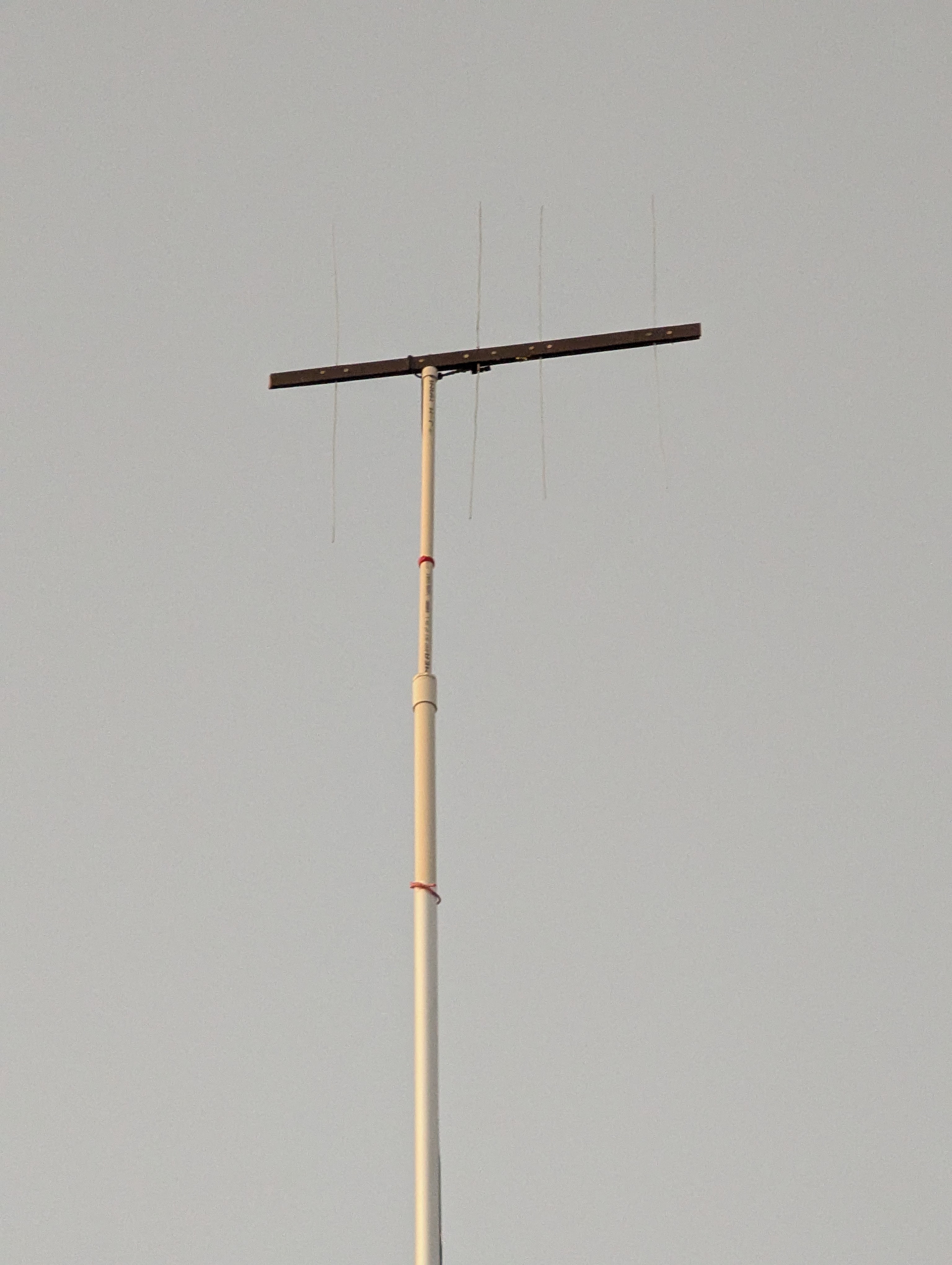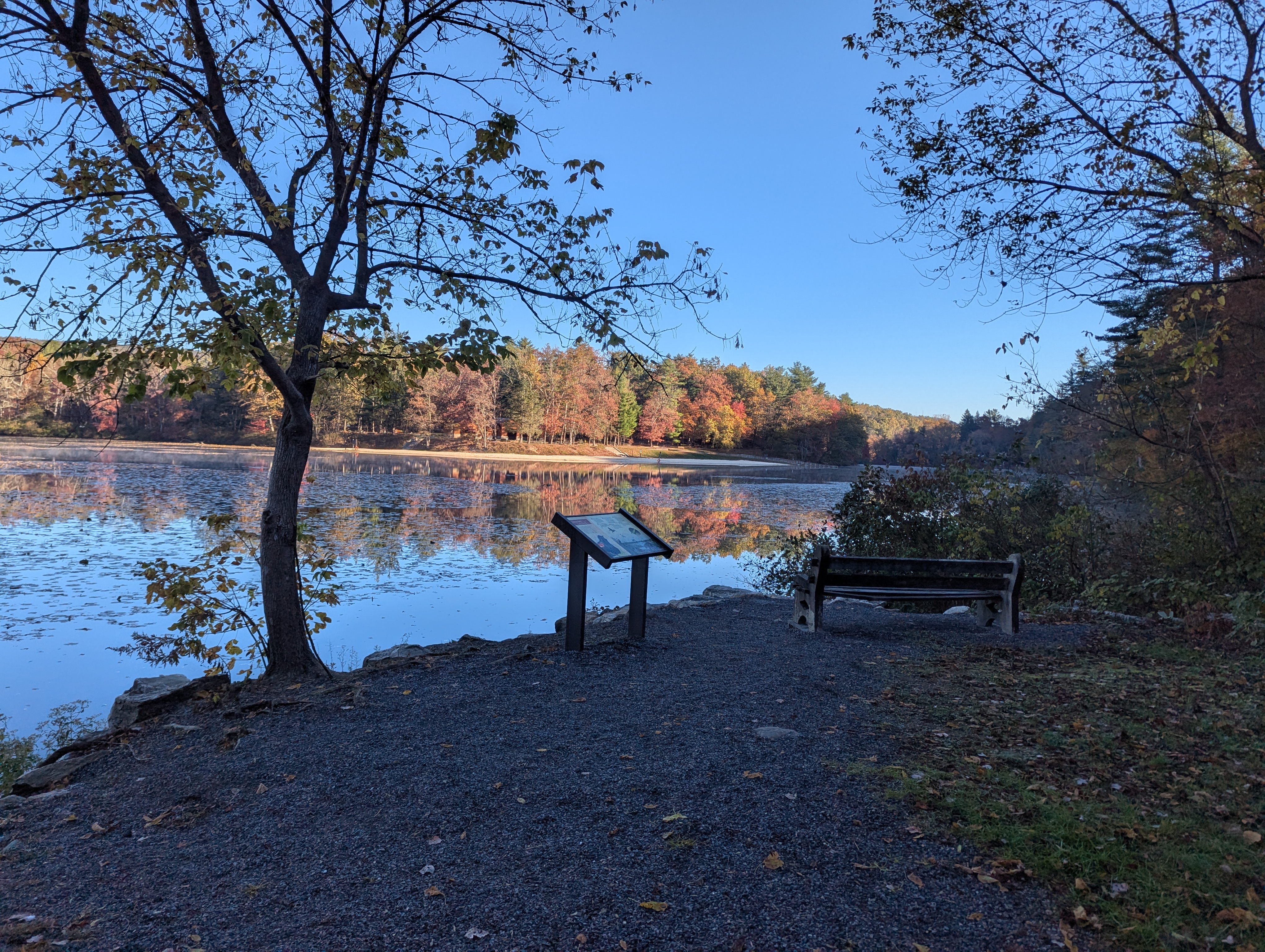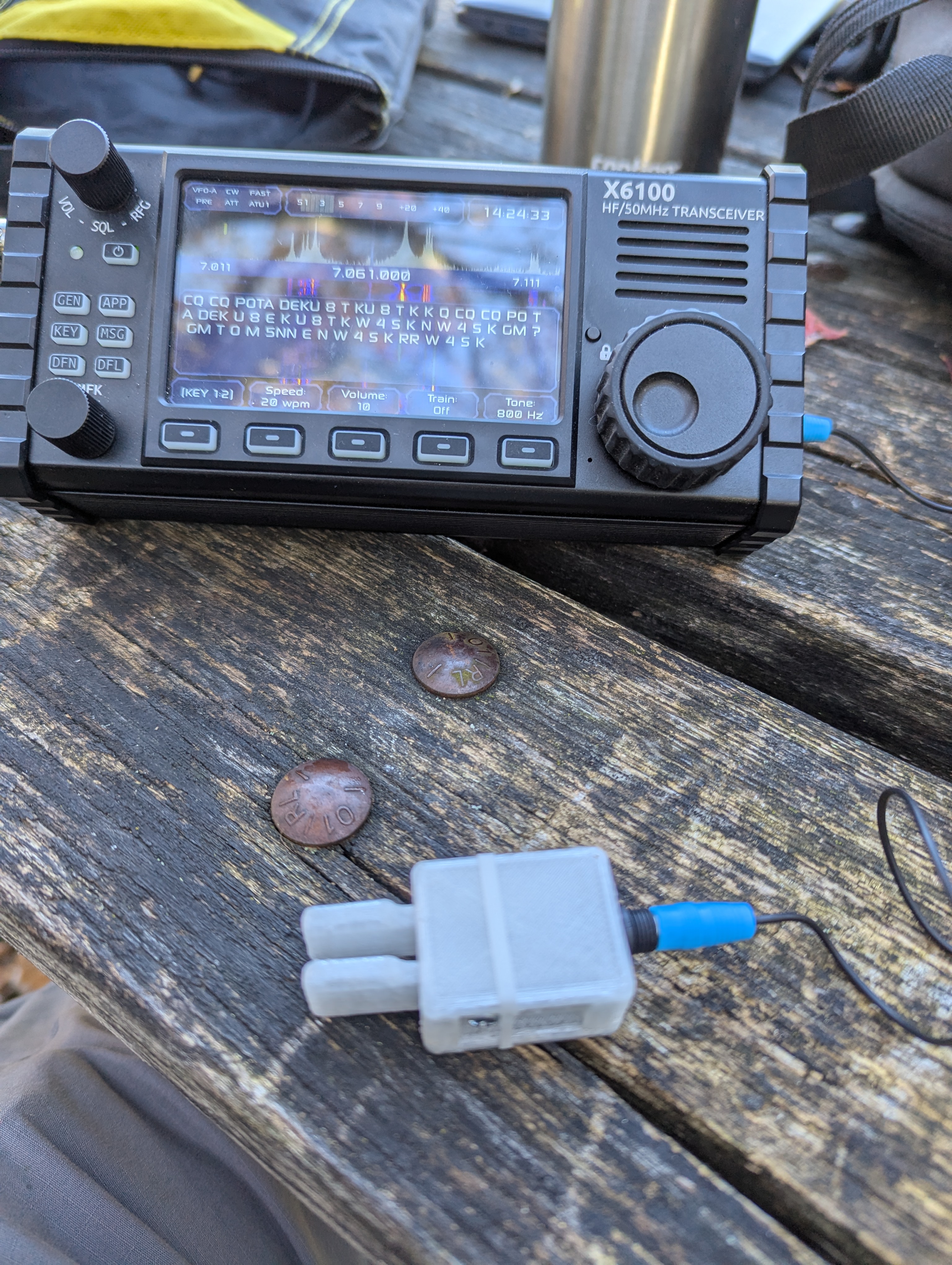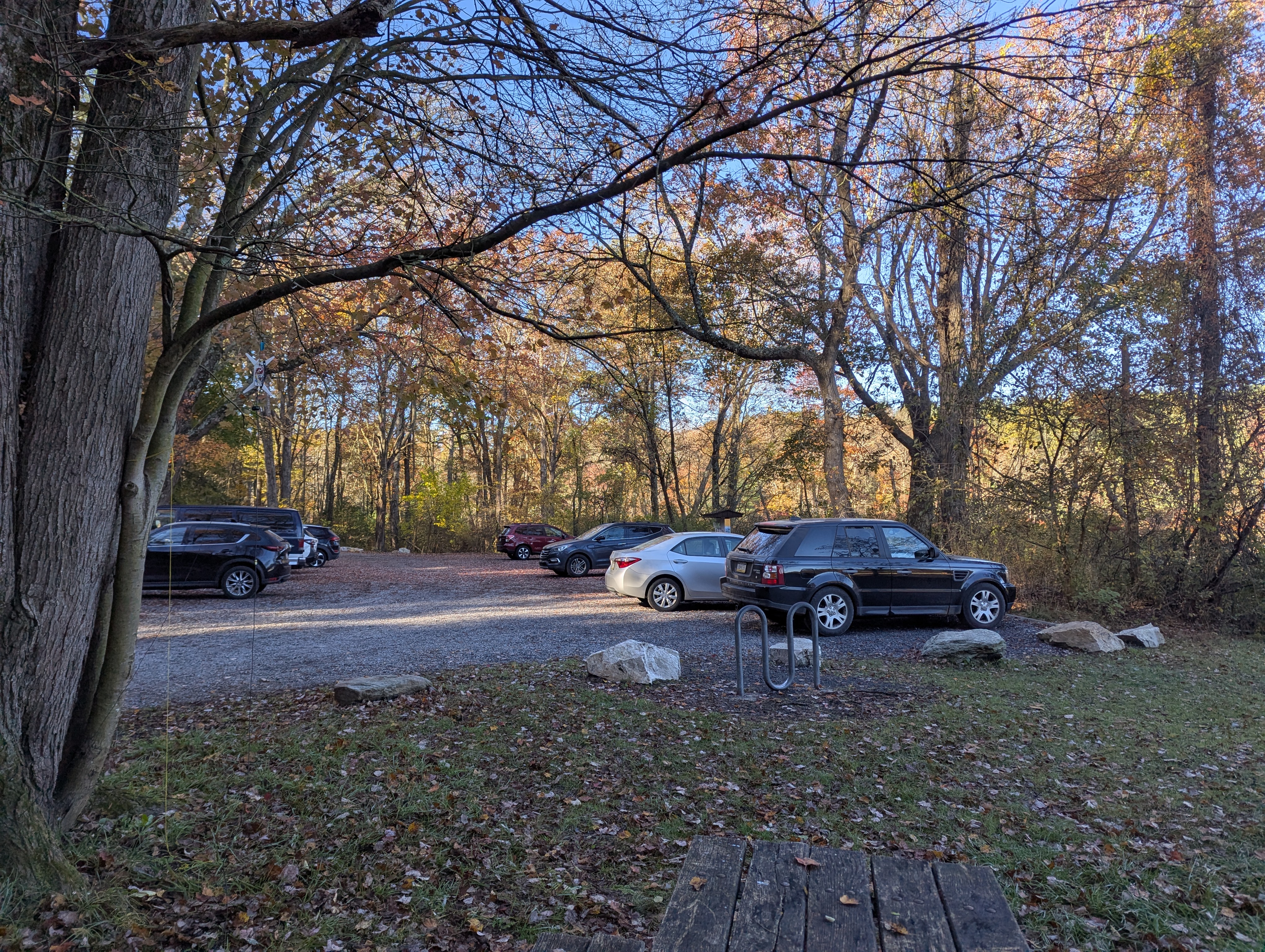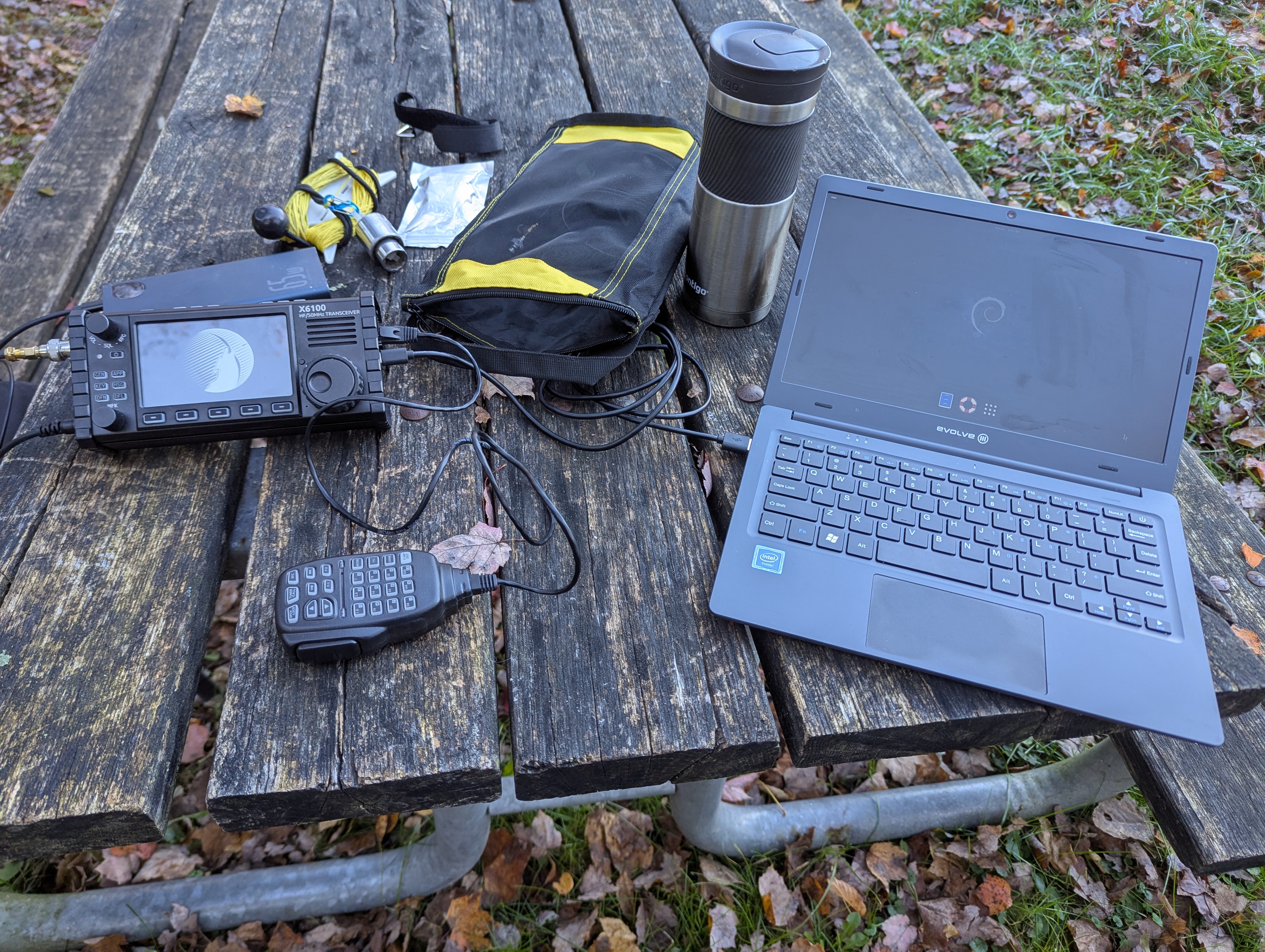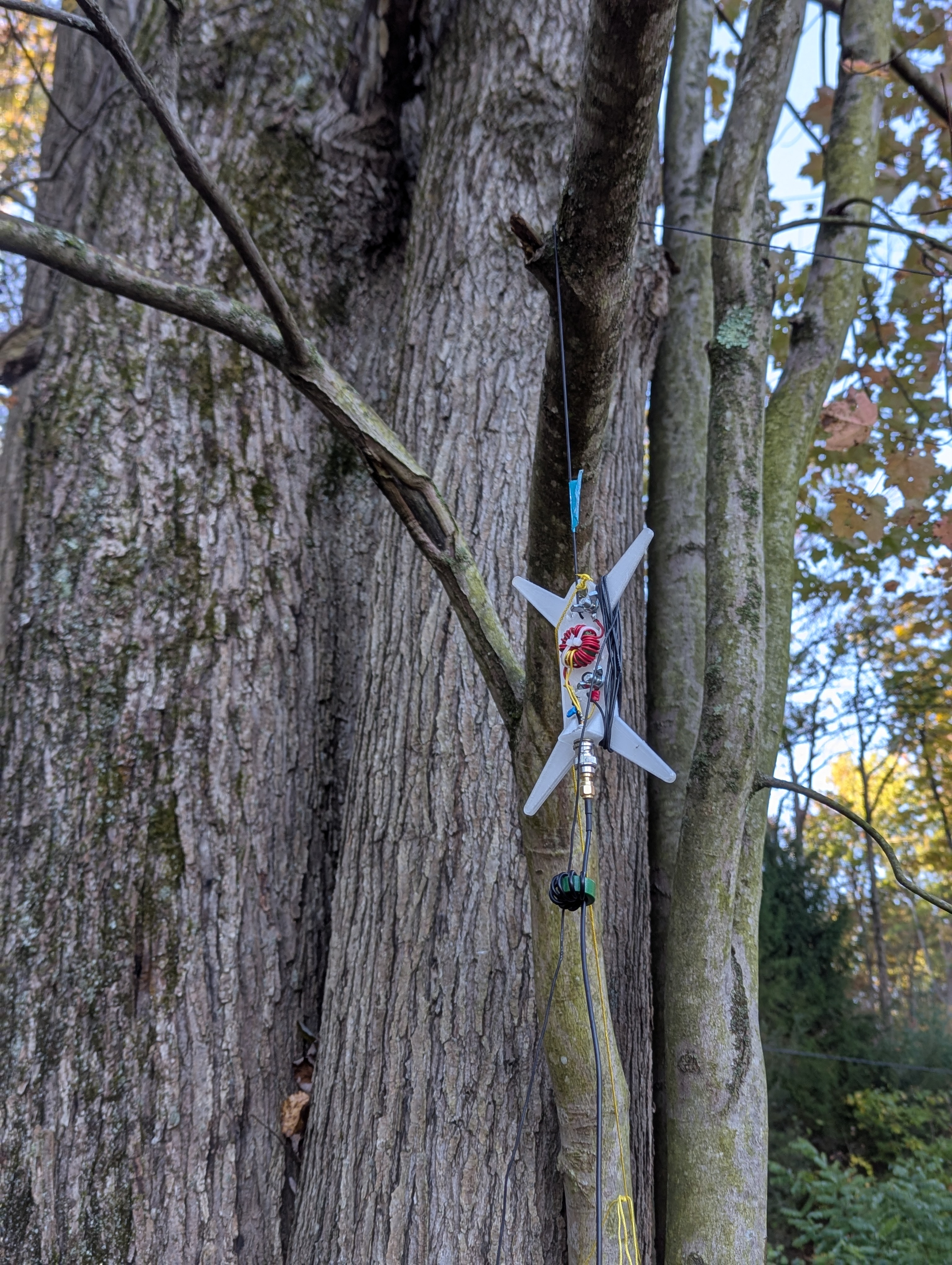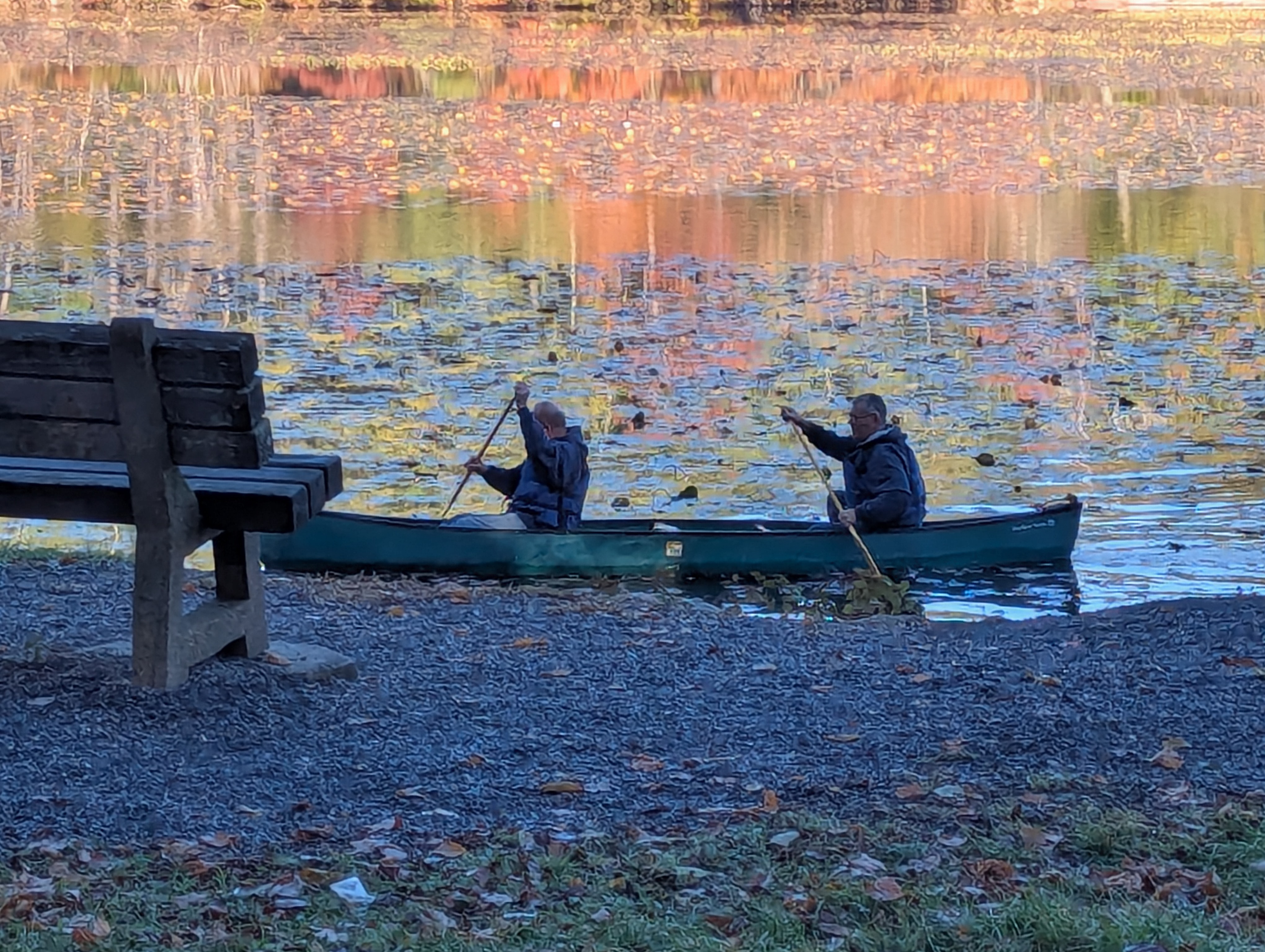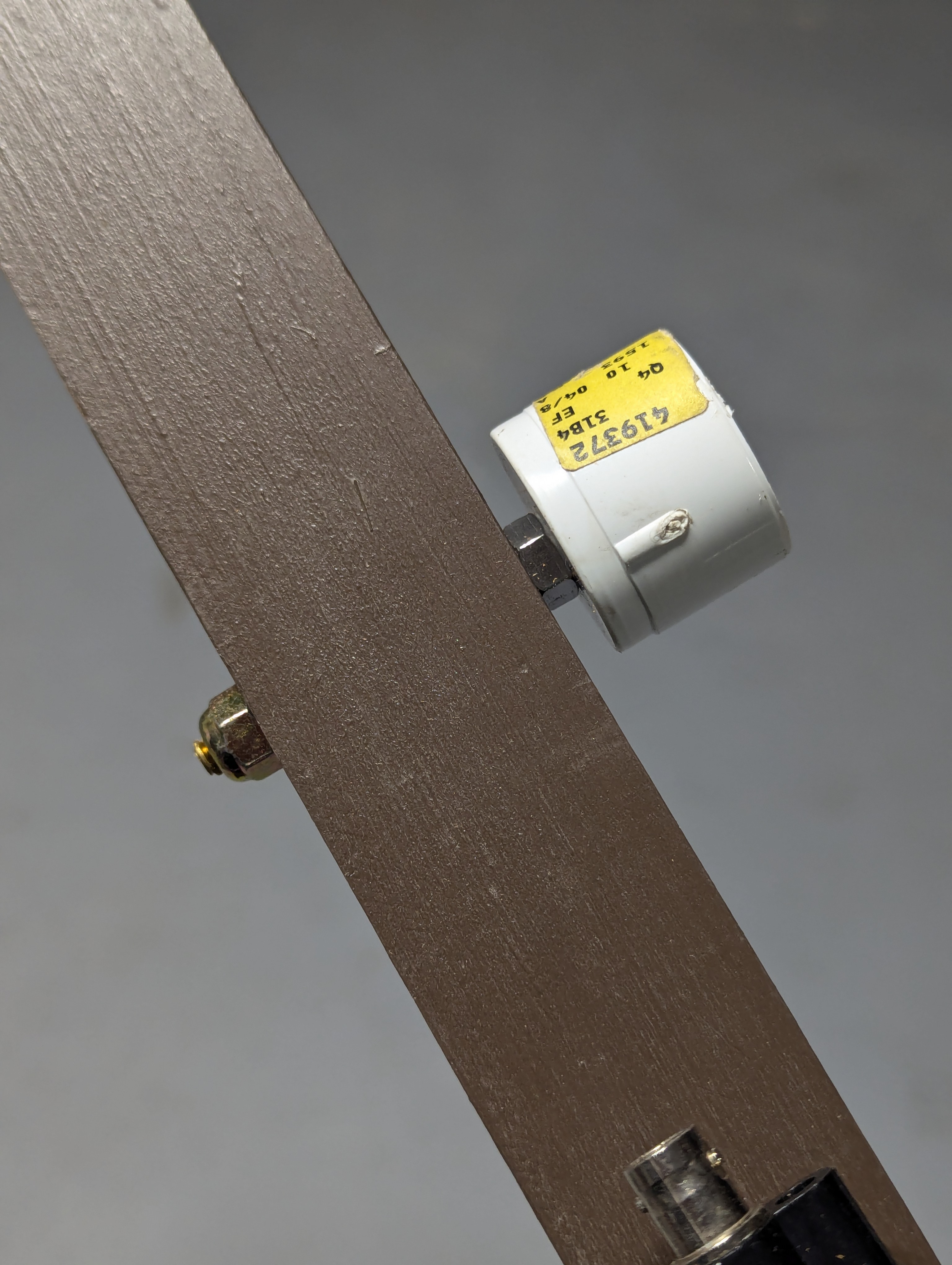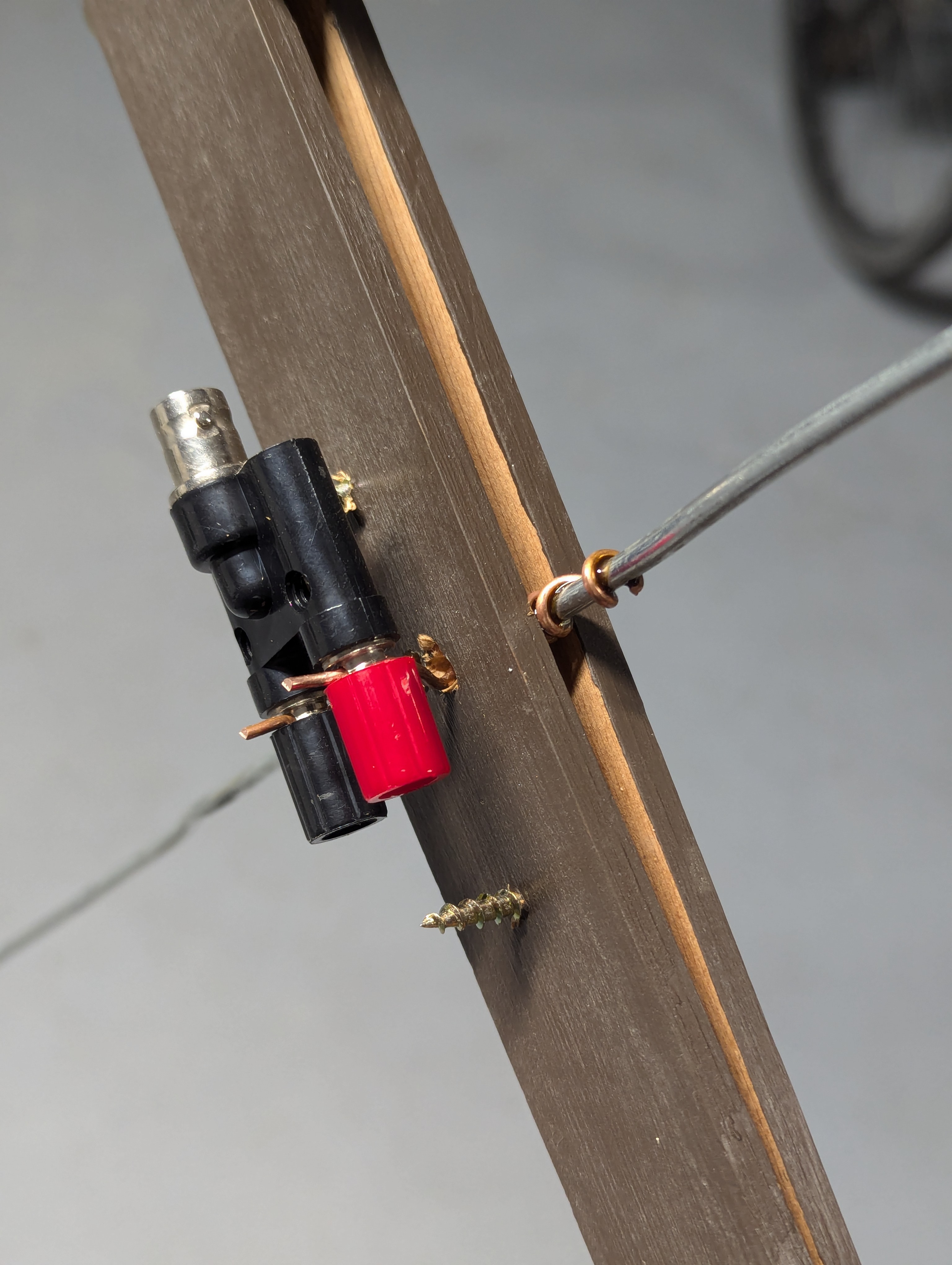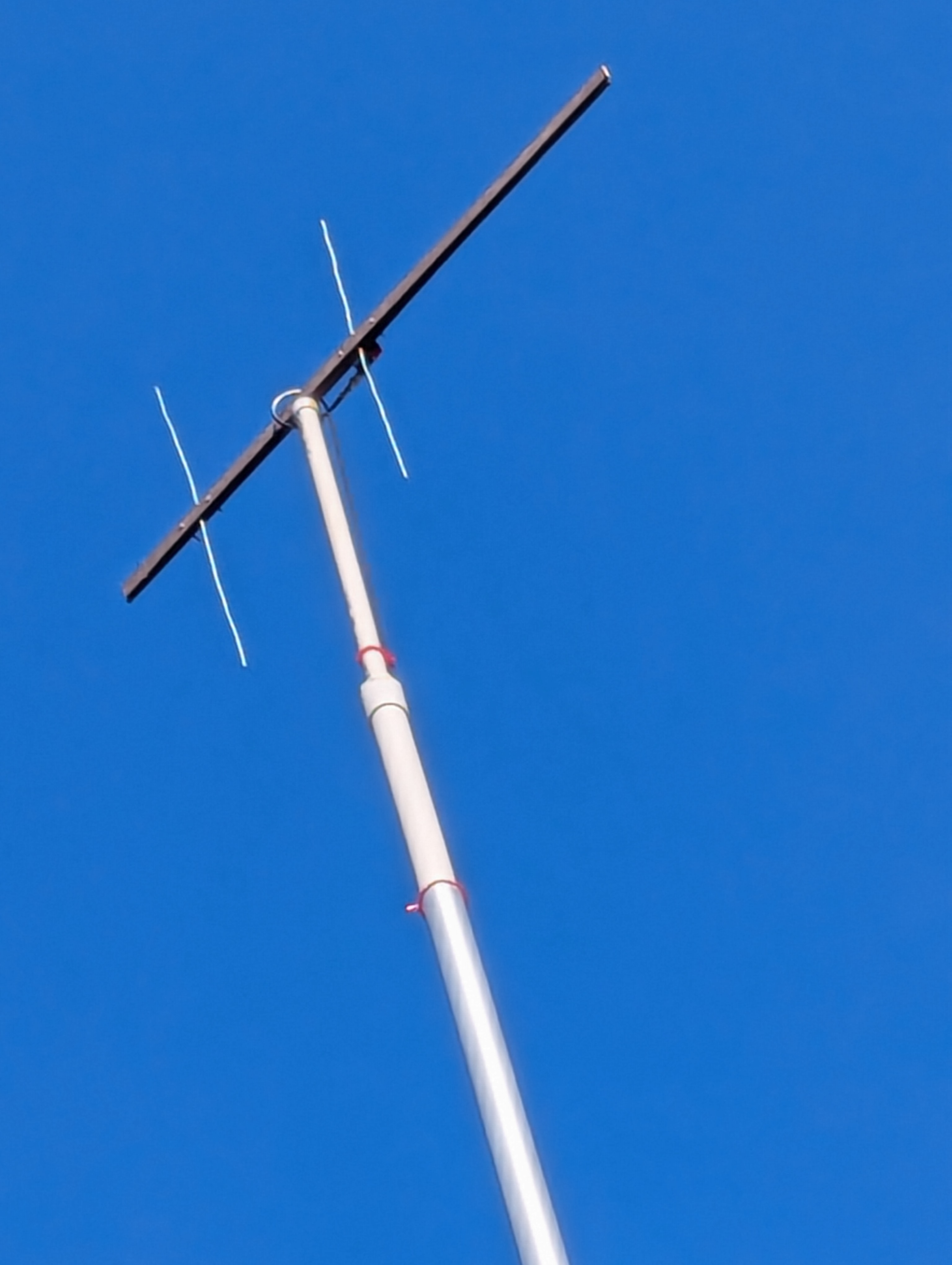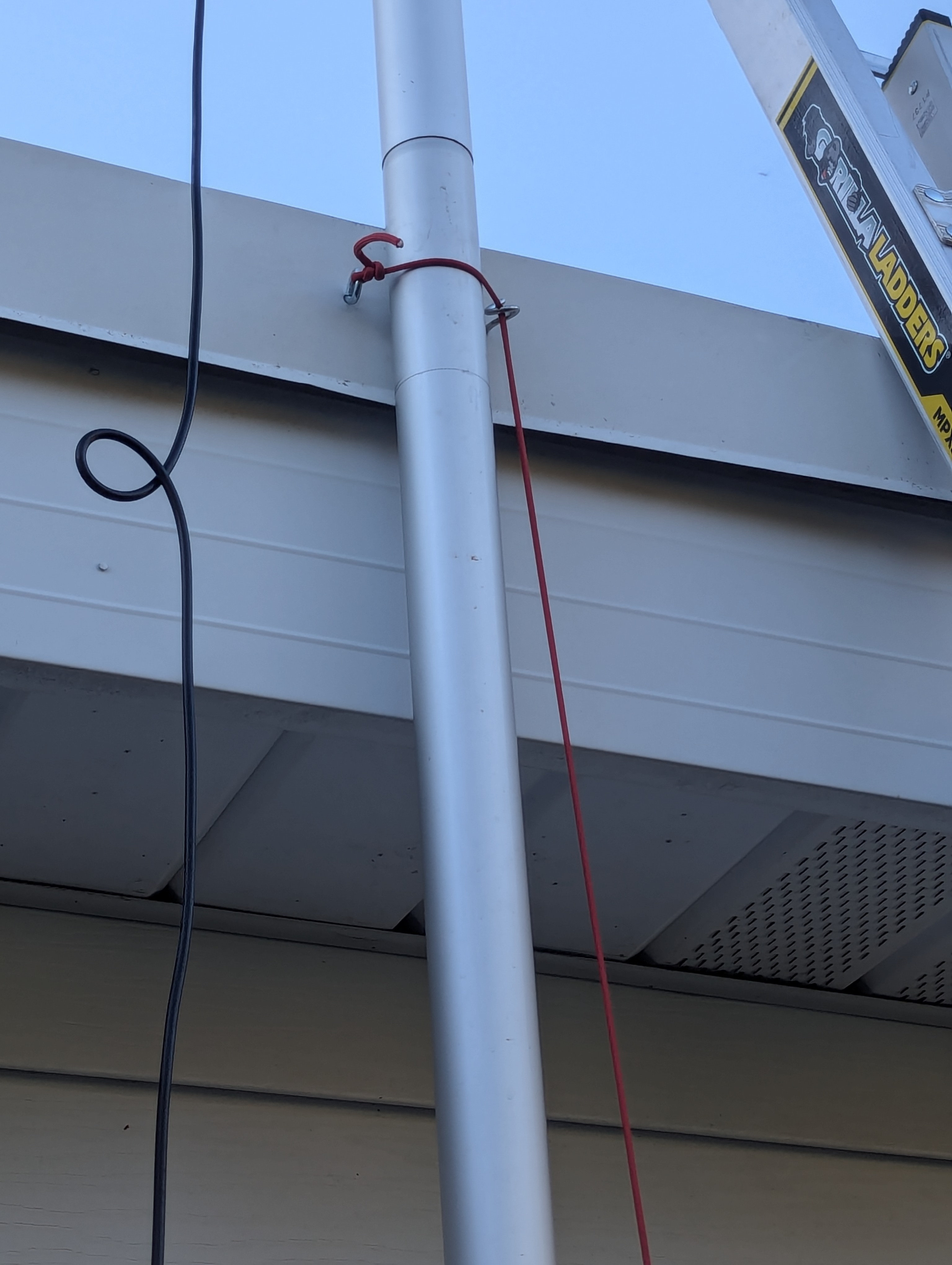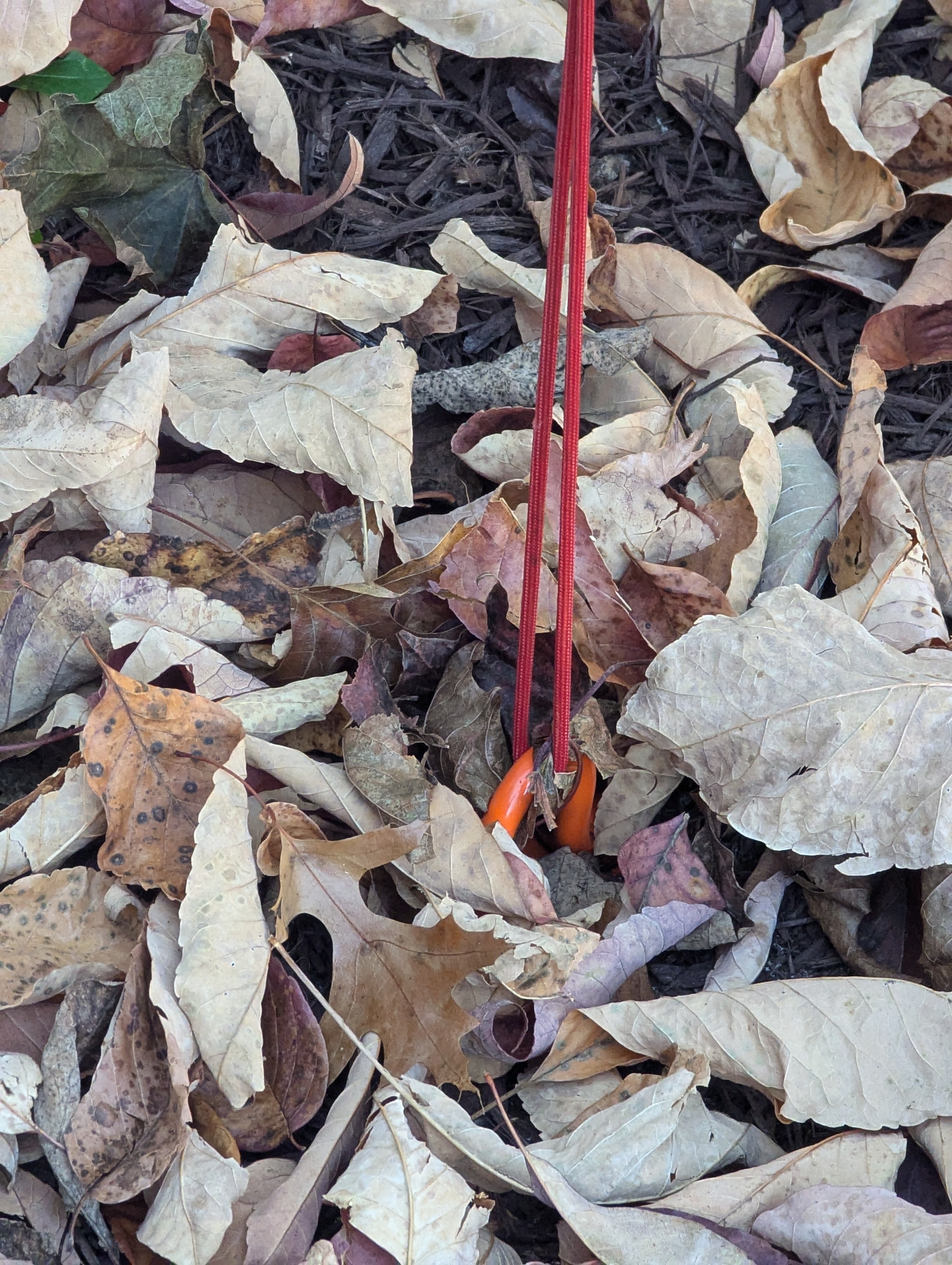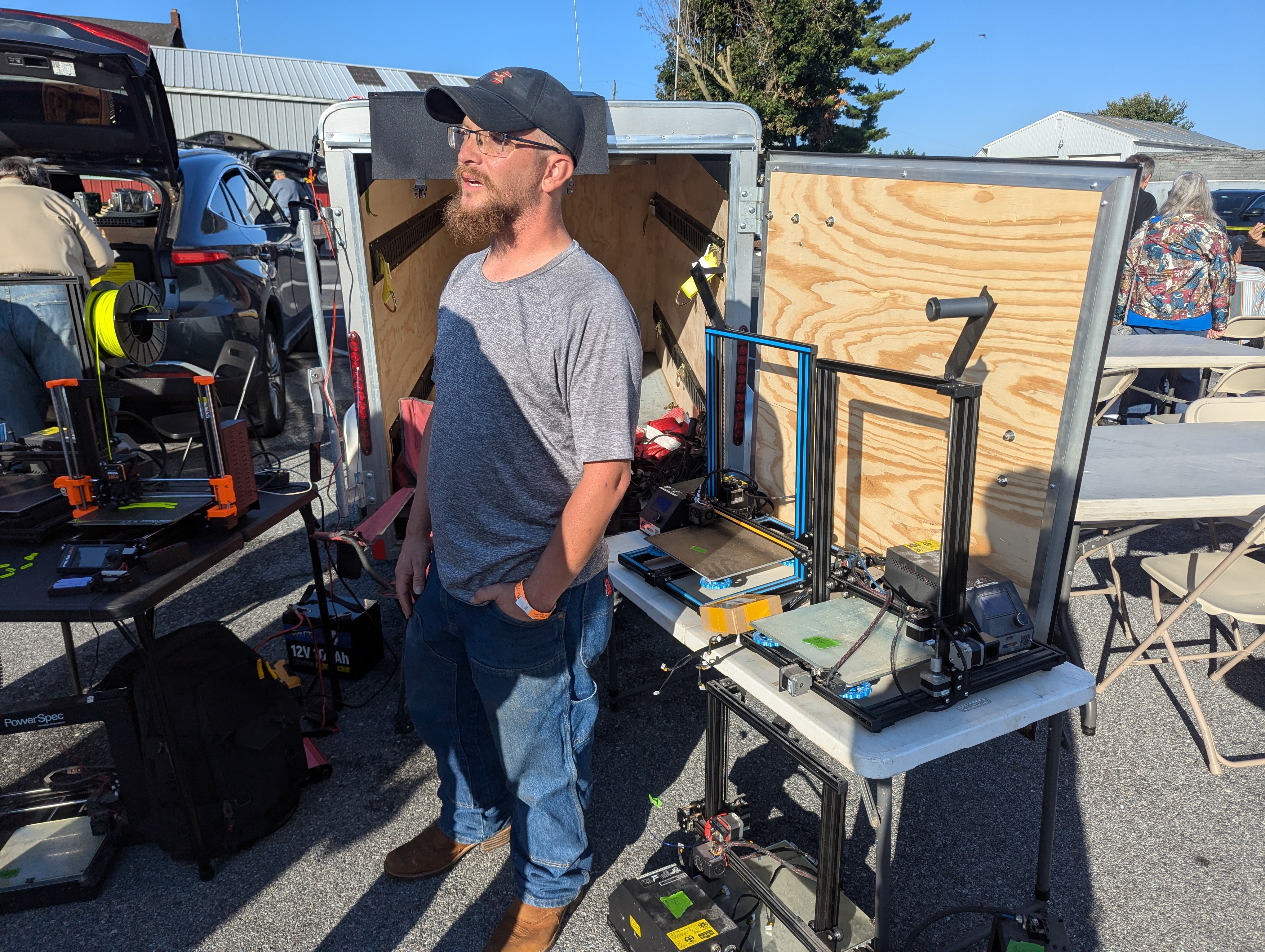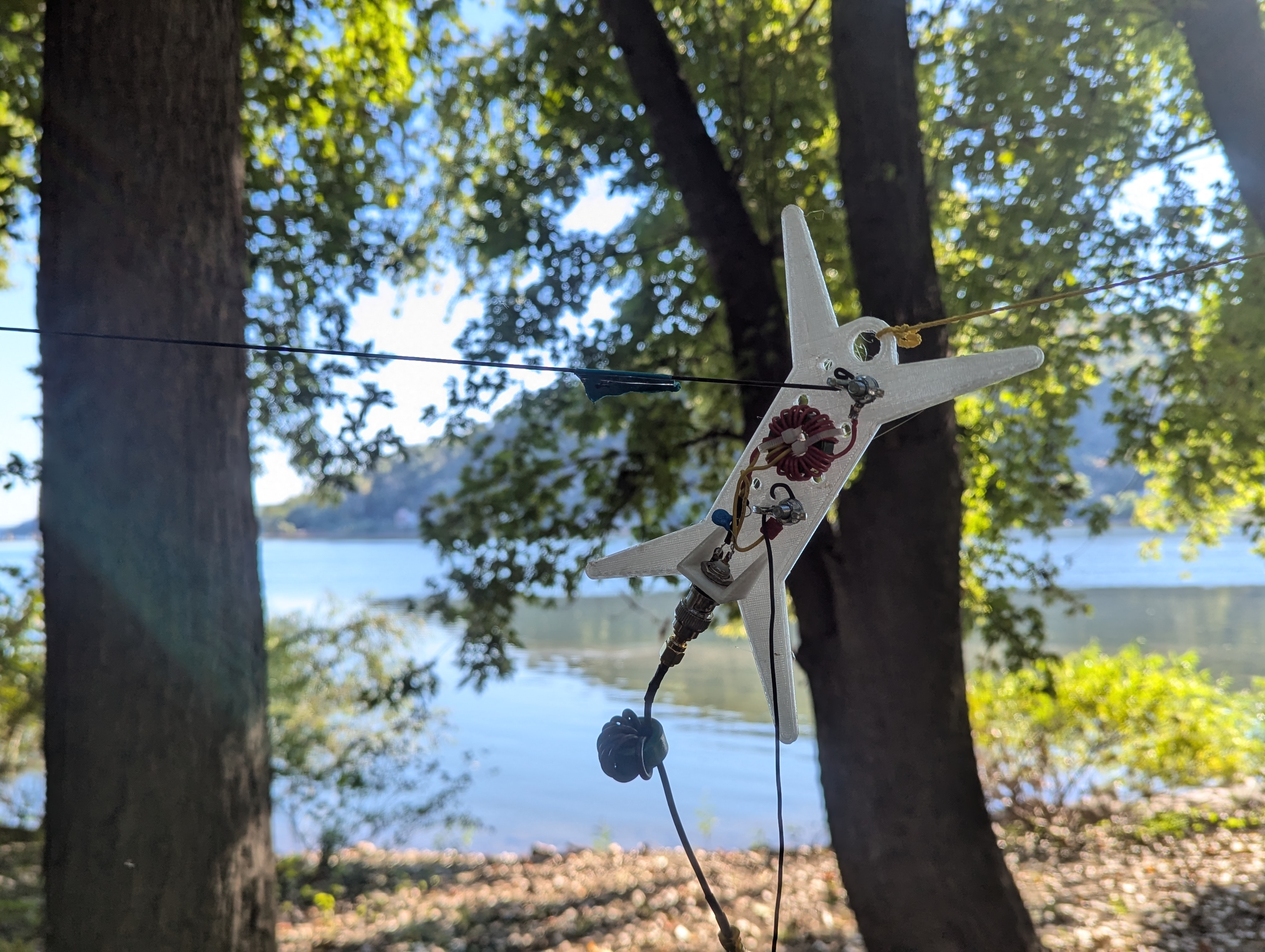I added some sections to the flag pole to reach 37 feet, and I increased elements on the home-made yagi from 2 elements to 4 elements. Upon adding elements, I needed to stretch the driven element a couple millimeters longer to tune it. In testing, I’m seeing about -100 RSSI listening to W3GMS on a Quansheng. It was about -105 RSSI when mounted lower and only 2 elements.
21 Tech Net: 2024-10-20
My Week in Radio
- I received a couple images from ISS, but it ended quicker than I realized.
- JARTS RTTY contest coming this weekend
- I did a little CW for POTA.
- Trying to reach a little further
over a hill and to the East
- building a yagi on a flag pole from a calculator using ARRL spacing
- 50W TYT radio
- This Week in Ham Radio Podcast Ham Radio History:
- 1916, amateurs exploring propagation
- 1917 first, faster trans-continental relays with ARRL
Others
- K3EA
- Upcoming ARRL Sweepstakes for CW
- Munsters had a Ham Radio episode
- KA3TKW
- W3UU Harrisburg Ham Fest this Saturday
- ARRIS mission on 24 Oct, 11:15AM, 145.800MHz
- Tri-repeater is up: 224.210 PL 123.0, 449.925, 53.21
- KK4KKW
- Sudden SWR reading on 40M antenna
US-1398 Pine Grove Furnace: 2024-10-20
I went camping and activating Pine Grove Furnace, US-1398, and Michaux Forest, US-5471. I stretched the EFHW over the parking lot, because I thought it wouldn’t be busy. I got 21 FT8 contacts and 2 CW contacts to other parks.
2-Element Yagi on the Flag Pole
Tilt-up Flag Pole
I figured out to do a tilt-up flag pole against the house reaching 25 feet into the air. It sits on a stake in the garden, and is secured to the house with paracord in an eyelet and hook screwed into the side of the roof.
2-Element Yagi
I built a new 2-element yagi using an online calculator It tuned OK with the banana-clip adapter directly connected to the driven element. I first tuned the dipole, and then added the reflector element. As predicted, it shifted the tuning slightly, so I trimmed the driven element to retune. The nice thing is that the spacings and sizes of the original elements don’t change as you add more director elements, so I calculated it with 2 or 3 directors, but put none in for the first iteration. I can add more elements later.
I gave it a try to reach 985 with the TYT TH-9800 running 50W. It was scratchy, but copy-able. I have more flag pole sections ordered to make it a little higher.
985 Workbench: 2024-10-14
My week in Radio
- I saw aurora for the first time, and I got some nice photos.
- I visited K3IR tower sight in Mount Joy during PA QSO party
- I listened to people contesting, but didn’t participate.
- TYT TH-9800: 50W into the tape measure yagi, tried it on the roundtable, still have work to do
- I threw my main 71-foot EFRW higher into another tree.
- I watched my flagpole and yagi in the wind
- walked it down while I had a kid here to help
- scoping a new location for it as a tilt-up attached to the house
- collecting pieces for some experiments in engineering
Questions
- W8CRW, CR:
- National Electronics Museum is hosting a class for general license.
- How far from the mast should a vertical yagi antenna be installed?
- Can it be installed 45-degrees to be used for both horizontal and vertical?
- WA3VEE, Ron: some have had success at 45 degrees for satellites.
- KC3SQI, Wayne: 45-degree will lose you 1.5dB
- WA3VEE, Ron: what is the ideal thickness for a bus-bar
to which you’re mounting a lightning arrester.
- KC3RFG, Jim:
- 1/4-inch minimum. thicker won’t hurt anything.
- mechanically strong (bolted) instead of soldered
- woven ground strap is best, but 6AWG stranded is good.
- NA3CW, Chuck:
- avoid inductance, so use strap or bar, not wire
- no right angles, no coils, no spirals
- KC3RFG, Jim:
- KC3RFG, Jim: Hearing ignition noise on HF on battery or on truck power.
How best can one eliminate that noise?
- KC3SQI, Wayne: Remove the mast from the coax and see if you still have the noise. If it’s still there, then it’s coming from power cables. Try a better ground directly to the battery. On vehicles that rust, bolts don’t ground so well after a while, so then you get lots of grounds connecting back through the antenna.
- KC3KZB, Aaron: go for a short ground, and keep ground wire away from ignition wires
- KC3SQI, Wayne: What’s the mechanical strength for 1.5-inch conduit?
- WA3VEE, Ron: See Ugly’s Electrical Reference.
- KC3RFG, Jim: that’s right.
- KC3WWC. John: I like that I can build my transformers and cut, measure,
and test wire antennas,
Is it practical to build, iterate, expand a homebrew yagi?
- NA3CW, Chuck:
- blatant plagarism: they’ve been around for a long time.
- modeling programs, manuals, existing antennas.
- different goals: gain, bandwidth, front-to-back ratio examples in the antenna book
- software
- moxon antenna: 2 element yagi with bent ends, massive front-to-back ratio
- great for direction-finding: forward to get in the neighborhood, then reverse to find the null where it disappears
- not much gain though
- NA3CW, Chuck:
- W8CRW, CR: Is there a program for windows to map out a computer network?
- W3DIB, Greg:
- there are lots of tools to probe and fingerprint machines to try to disclose the host OS.
- also ping, angryping, etc.
- W3DIB, Greg:
985 Workbench: 2024-10-07
My Week in Radio
- I saw some antennas at the Ham Fest, but I couldn’t bring myself to buy any. I’ll build.
- I passed extra at the Ham Fest
- I guess enough workbench discussion sunk into my brain.
- Found I can download and search a copy of the entire ULS database like some of those other helpful websites that show available callsigns.
- POTA along the Susquehanna River.
- Normal FT8 to get to 10 contacts.
- 1 CW contact, and it wasn’t painful.
- I tested out my newest printed EFHW antenna winder.
- Running and comparing Meshtastic and APRS more
- Why use it?
Other News
- WA3VEE, Ron, PA QSO Party this weekend.
- KC3SCY, Luke, switched his loose couple radio from diode to cat whisker.
- KC3ZSJ, Gary, is playing with new antennas.
- W3FES, Fred, has a new FT-60R
- AF3Z, Jim, is headed to Cornwall Ranger Station for PA QSO Party
Questions
- KC3SZO, Chris: How can I overcome some terrain in the way of my RF?
- WA3VEE, Ron: Antenna in the attic
- NA3CW, Chuck: VHF isn’t exactly line-of-sight, so there is hope.
- KC3WWC, John: Lower YAGI inside had advantages over a higher outside ground plane quarter wave.
- AA3LH, Leon: Let’s confirm repeater settings for this old radio and new antenna going in the car.
- KC3WWC, John:
- I could change my callsign now.
- I’ve only used this one for a year, so not super-attached.
- For contesting, I see the benefit of a shorter call, so I might ultimately consider phonetic and morse weight.
- How did you choose your vanity call? What strategies should I consider?
- NA3CW, Chuck: initials.
- W8CRW, CR: initials.
- AA3LH, Leon: initials, and wanted an “A” call.
- AF3Z, Jim: assigned by FCC. Consider how it sounds in CW.
- WA3VEE, Ron: assigned, and sounds cool.
- He also has K3DTS for the campus location of his old club.
- quick and simple for CW
- 1-by-1 is for special events.
- easy to understand, so stay clear of confusing letters; V, C, Z, etc.
- sound in sideband: normal or phonetic.
- KC3OOK, Bill: assigned.
- catching phonetic for DX
- NA3NA was catchy.
- KC3QQD is funny: Quack Quack Duck
- Callsign ideas:
- KD3FN
- KB3VI
- KC3VI
- AA3WW
- AA3KK
W3RRR Hamfest and POTA
W3RRR Ham Fest
I passed the test for Amateur Extra: 40/50 correct. I needed 37 correct.
US-4567, Captain John Smith Trail
- POTA with Matthew, KC3WRY, at the boat launch under train tracks south of Marietta.
- FT8 on 20M
- 1 CW P2P contact on 20M. I didn’t fumble so much.
- I used the newly-printed and rebuilt EFHW winder and throw line. The velcro strap remains a problem for snagging the line.
985 Workbench: 2024-09-30
My Week in Radio
- I moved the tape-measure yagi
to the top of a 25-foot flagpole
in the backyard.
- 10 W, but not quite doing it.
- There’s still too much of a hill.
- I upgraded the X6100 baseband, stock firmware, and 3rd-party firmware.
- Some CW
- barely got 2 CW contacts hunting POTA, but I got into their logs
- heard AF3Z on 40m out on his trip
- morsle app to practice copying CW words and call signs
- I redesigned and printed a new antenna winder.
- I heard some AM and some RTTY during contests.
- I cleaned up and organized all the radio stuff from the move instead of contesting.
- I’m going to try for my extra ticket at the next Ham Fest.
Others’ News
- KB3RFG, Jim: all the bands open today in lots of directions
- NA3CW, Chuck: lot’s of AM fun
- AF3Z, Jim
- spectated some RTTY contesting
- 10m CW conversations
- WA3VEE, Ron: LMR400 (KMR400) coax is lowest loss practical
Questions
- KN3I, John: How does one make an AM rig sound good? Carrier power, modulation, etc.
10 Meter Opening
10 meter started opening today. With 5 watts, I got to Hawaii and Greenland.
X6100 Firmware Again
Xiegu released another updated firmware for the X6100: APP 1.1.9 & BASE 1.1.8, dated 2024-09-23.
- I downloaded it from Radioddity, and wrote it to an SD card:
$ sudo dd if=sdcard.img of=/dev/sda bs=1M status=progress
- I booted the new card for the app upgrade to 1.1.9,
- I applied baseband 1.1.8 from the menu in the UI.
- I tried the CW key in the stock firmware, and it transmitted (unlike last time).
- I booted back to R1CBU, and it looked good there as well.
I did a little FT8, decoded some CW, and listened to some SSB on 40m. I found I could to turn the RF Gain closer to 100 instead of below 63. It may be reading slightly lower power on the display before ALC kicks in: up to but not over the 5W, where it used to often push a little past.
It’ll stay.
